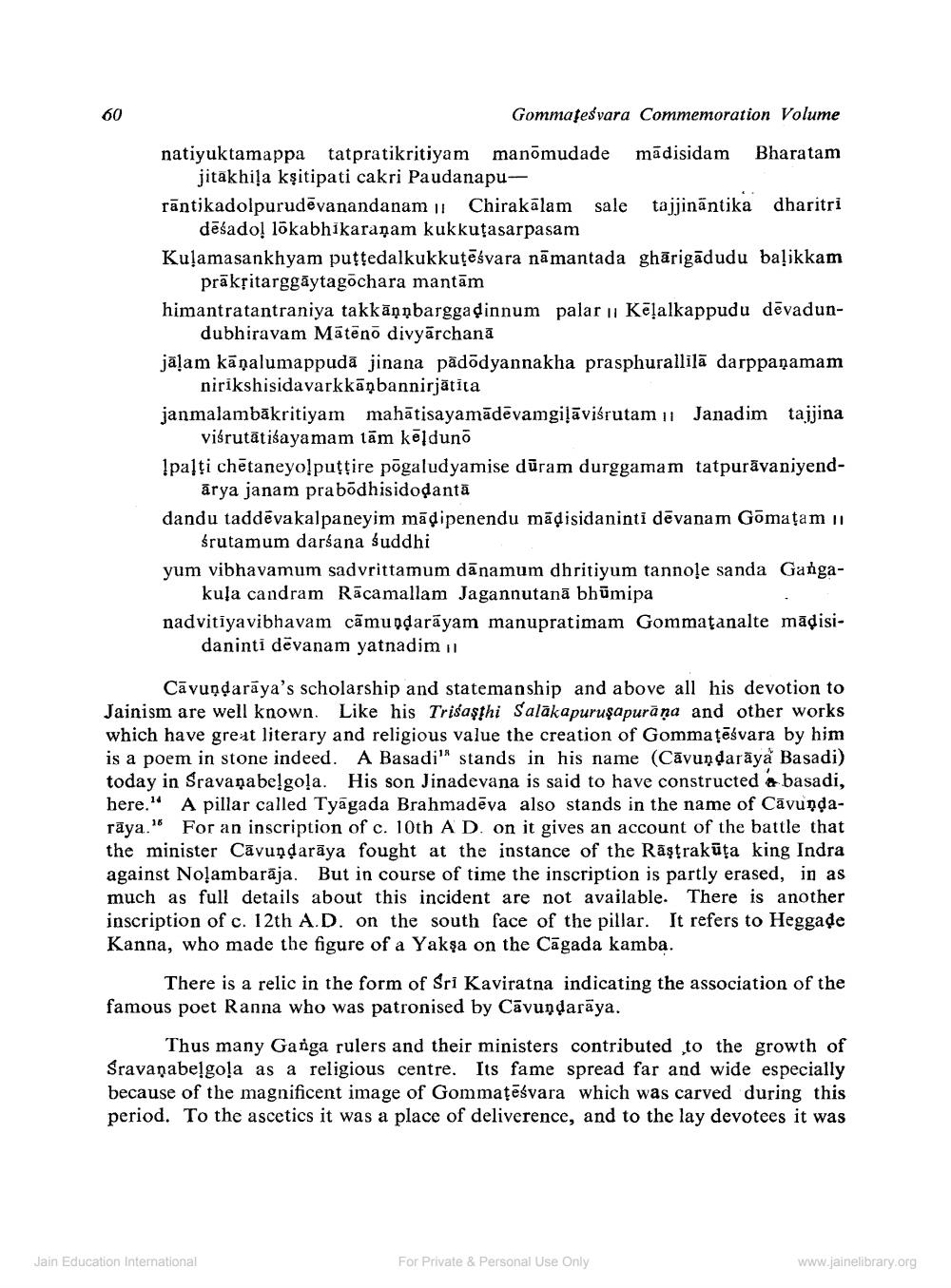________________
Gommatesvara Commemoration Volume
natiyuktamappa tatpratikritiyam manõmudade mädisidam Bharatam
jitakhiļa kşitipati cakri Paudanapurāntikadolpurudēvanandanam | Chirakālam sale tajjinantika dharitri
dēśado! lokabhikaranam kukkutasarpasam Kuļamasankhyam puttedalkukkuţēšvara nāmantada ghārigādudu baļikkam
praksitarggāytagochara mantām himantratantraniya takkāņņbarggadinnum palar 1 Kēļalkappudu dēvadun
dubhiravam Mātēno divyārchana jālam kāņalumappuda jinana padodyannakha prasphurallilā darppamamam
nirikshisidavarkkāņbannirjätita janmalambākritiyam mahātisayamādēvamgiļāviśrutam 11 Janadim tajjina
višrutātiśayamam tām kēlduno Ipasti chētaneyolpuţțire põgaludyamise dūram durggamam tatpurāvaniyend
ārya janam prabodhisidodanta dandu taddēvakalpaneyim mādipenendu mādisidaninti dēvanam Gomațam ||
śrutamum darśana suddhi yum vibhavamum sadvrittamum dānamum dhritiyum tannole sanda Ganga
kula candram Rācamallam Jagannutanā bhūmipa nadvitiyavibhavam cāmuqdarāyam manupratimam Gommaţanalte mādisi
daninti dēvanam yatnadimir
Cāvundaraya's scholarship and statemanship and above all his devotion to Jainism are well known. Like his Trišaşthi Salākapuruşapurāna and other works which have great literary and religious value the creation of Gommațēśvara by him is a poem in stone indeed. A Basadi's stands in his name (Cāvuņdarāya Basadi) today in Sravanabe!goļa. His son Jinadevana is said to have constructed & basadi, here." A pillar called Tyāgada Brahmadēva also stands in the name of Cāvundarāya. For an inscription of c. 10th AD. on it gives an account of the battle that the minister Cāvundarāya fought at the instance of the Rāştrakūta king Indra against Noļambarāja. But in course of time the inscription is partly erased, in as much as full details about this incident are not available. There is another inscription of c. 12th A.D. on the south face of the pillar. It refers to Heggade Kanna, who made the figure of a Yakşa on the Cāgada kamba.
There is a relic in the form of Sri Kaviratna indicating the association of the famous poet Ranna who was patronised by Cāvuņdarāya.
Thus many Ganga rulers and their ministers contributed to the growth of Sravanabelgola as a religious centre. Its fame spread far and wide especially because of the magnificent image of Gommațēśvara which was carved during this period. To the ascetics it was a place of deliverence, and to the lay devotees it was
Jain Education International
For Private & Personal Use Only
www.jainelibrary.org




